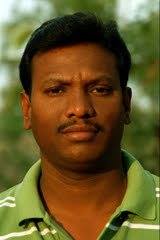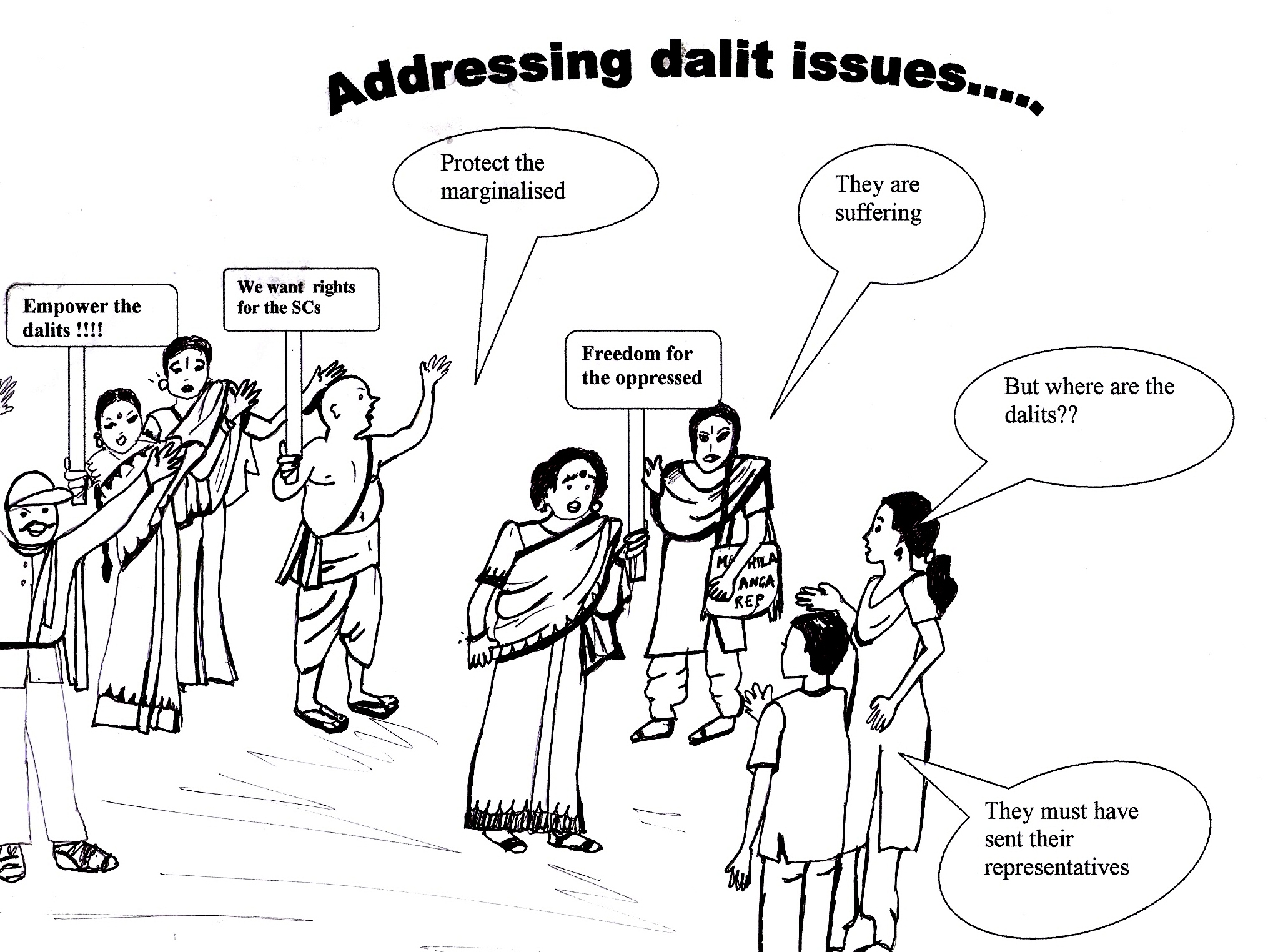Gurram Seetaramulu
 During the draconian Emergency era, the youth of those days felt that an alternative politics was the imperative need of the hour. This was followed by a new consciousness that urged students to ‘go to the villages’. With the arrival of Mandal, the universities turned into a battleground between those who opposed reservations and those who supported them.This was the moment when the forces supporting change were gathering new momentum across the country and this mood also enveloped the central universities. In University of Hyderabad, we had witnessed the emergence of a new generation of students who came from the crucible of similar social movements, from less than ordinary backgrounds – from remote villages, hamlets and tribal settlements – and grew from saplings into trees.
During the draconian Emergency era, the youth of those days felt that an alternative politics was the imperative need of the hour. This was followed by a new consciousness that urged students to ‘go to the villages’. With the arrival of Mandal, the universities turned into a battleground between those who opposed reservations and those who supported them.This was the moment when the forces supporting change were gathering new momentum across the country and this mood also enveloped the central universities. In University of Hyderabad, we had witnessed the emergence of a new generation of students who came from the crucible of similar social movements, from less than ordinary backgrounds – from remote villages, hamlets and tribal settlements – and grew from saplings into trees.
With the hands that used to play the dappu, when Nagappagari Sundarraju started to reel out insightful dissent poetry with ease, the janeudhari felt immensely offended and branded him a traitor. Undaunted, he had roared ‘yes, I am a traitor’. Uppu Veeraswamy who chose the path of alternative politics to bring about systemic transformation, had suddenly become a ‘threat to the internal security of the nation’ and a victim of the murderous brutality of reactionary elements. The rebellious spirit of both lived on as a blazing, inextinguishable flame.

Koppula Nagaraju, a Madiga student from the same university whose roots were located in a family of construction labourers, represented the continuation of their legacy. After University of Hyderabad, he went on to become one of the first Dalit journalists to work in a mainstream English newspaper in the country. Whether it was due to the pressures of his profession or due to the negligence of doctors treating him – Nagaraju’s life was extinguished abruptly recently, claimed by lung cancer. A talented journalist and a more skilled artist’s journey ended even as it had barely started.
Nagaraju, who showed great promise both as a student and a journalist, came from an extremely poor Madiga family. Three decades ago, his family was one of the hundreds of migrant labourers’ families which had come to Sarapaka, on the banks of the Godavari in Khammam district in Telangana, searching for work in the paper mill there. His parents worked as construction labourers when the foundation of the mill was being laid, on the banks of the river, when his mother was pregnant with him.
Nagaraju’s childhood was spent in a mud and thatch hut near the river. The little hut, so cramped that it could not accommodate even two cots, bore the burden of five children – Nagaraju, his two older brothers and two older sisters. There, he had to swim against the combined currents of both hunger and untouchability, and against tragedies that life threw up regularly, like the stormy upheavals in the Godavari. One of these tragedies was his father’s death, when Nagaraju was still a very young child.
While other children of his age went to school, Nagaraju would move around the village, heaving an icebox on his head, hawking his ware at the top of his voice and return home in the evening with a few coins securely lodged in his pockets. He worked on all kinds of odd jobs in the area, from Sarapaka to the bazaar at the steps of the famous Ram’s temple in Bhadrachalam. In the middle of all the running around he had to do, he would sometimes pause a moment or two to gaze with pride at all the signboards he had painted around the town. But he would never forget to meticulously save all the money he could from his meager earnings so that he could get through school and junior college.
That was his life – from the thatched hut in Sarapaka to higher education in University of Hyderabad to the prestigious Indian Institute of Journalism in Bangalore for further education to a course in creative writing at Tehelka magazine in Delhi – he had to pass through every stage in early life by working on any job he could get to achieve his goals. Even though N. Ram at The Hindu offered him a job, caste scuttled this opportunity. He was more than qualified for the position, but was made to go through a simple test thrice, and failed every time. Disgusted with this humiliation, he joined The New Indian Express. But within two years of joining his new job, fate dealt him another vicious blow. His life is an extraordinary journey: none of the debilitating upheavals in his life, nor his poverty, could ever deter him. Instead, he converted all of his travails into new reservoirs of strength so that he could move ahead, unhindered.
He had long discussions with us at EFL University, in the process of writing a report, when we were planning to host a Beef Festival in the campus. He finished the report but it was put aside by his bosses because they did not like it. Nagaraju had to learn to absorb the bosses’ priorities, putting aside his own sometimes, and fight to overcome many such occupational challenges to make his own mark in his chosen field. His extraordinary commitment to his job, being made to do the work of three people instead of one, took its toll as he failed to notice, due to work related stress, the trauma his own body was going through.
Troubled by an unrelenting cough he got himself admitted in the Government Chest Hospital in Hyderabad where he was ‘treated’ for six months for tuberculosis, a disease which he did not suffer from! It was due to the mistreatment there that the real disease he was afflicted with, which could have been stemmed if treated in time, worsened. When he finally went to the Basavatarakam Cancer hospital, after a weeklong stay, they told him that he was suffering from cancer, in an advanced stage, and gave him a report. This was a great shock for him, but he continued to fight bravely. Despite knowing that even if his treatment was started right after getting admitted into the Basavatarakam Cancer hospital he would not have had more than 3-5 months to live, at best. Despite knowing that the disease was spreading like lava inside his body even as he went through several chemotherapy sessions.

Nagaraju had a million hopes – who is responsible for his life reaching such a hopeless state? Migration becomes inevitable when livelihoods disappear in the villages, and the cities become unlivable – it is our collective failures that lead to the destruction of the environment which in turn leads to these disasters. Now the city has become sick. We are caught in a vicious circle, even as modernity churns out new conveniences regularly, medicine makes steady advances. You never know what illness could suddenly claim your life at any given moment; this is the destruction that ‘modernity’ has brought with it.
Koppula Nagaraju entered University of Hyderabad during a period of ferment. Even as the poverty that accompanied him from his birth mocked at his aspirations, he overcame all the challenges that life flung at him to become a journalist recognized for his talent in the mainstream English language press. He tried to infuse his own unique humanism into every story he wrote. But the journalist who wrote several insightful reports – on subjects ranging from defenseless animals to orphaned corpses to organ donation and the government’s neglect of the public healthcare system – couldn’t identify the storms happening within his own body. Towards the end he used to observe that it was probably work related stress that drove him to the tragic situation he was in.
In Indian universities, it is only now that some signs of hope are emerging, but the coordinated challenge of the Dalit Bahujan students in these spaces seems to be making the hegemonic forces very angry. Today Dalit Bahujan students are raising their voices on a wide range of issues, from the violence of dominant food culture to the racialist prejudices inherent in Brahmin mythology, having internalized the spirit of democracy. One pen that could have done justice to this new, vibrant history has now stopped.
The slogan that says, ‘we will write history with the same hands that stitched chappals‘ sounds nice. But Nagaraju’s plight makes us think – a collective consciousness, that should endeavour to fulfill the aspirations of the community, is now losing badly to the stratagems of the ruling classes. When self-respect is being sold out in kilos by the political leadership, what more could he expect from them than mere courtesy calls? But Nagaraju had the capacity to rewrite history and the world needs to be told about the courage he showed in fighting all the adversities that his life was riddled with, and also against impending death.
The New Indian Express‘ Hyderabad unit, manned by wolves in sheep’s clothing who call themselves ‘progressive’, needs to be exposed for the blatant caste discrimination that it practiced against Nagaraju. The way The New Indian Express shirked all responsibility for taking care of its employee, Nagaraju, in his hour of need, and implicitly told him that he had to deal with his problems on his own by removing him from their rolls – its editor Vasu and the management have to be questioned for this blatant disregard for humanitarian values. The doctors in the Chest Hospital who treated Nagaraju for an ailment he did not suffer from for a long, crucial period of six months, during which precious time some real treatment could have happened, should also be held responsible for their criminal neglect of their duties.
Beginning his journey from a neighbourhood school in the village of Sarapaka, Nagaraju rose to a stage of career success that would take him to all major cities in India. Through sheer determination and hard work Nagaraju had managed to start transforming his life into an inspirational painting, defying his humble roots, but had to finally leave the canvas only half finished. A life that had endured many battles right from his childhood, finally bowed down to the disease that was burning inside him, on the morning of April 12th.
Dear friend, death has liberated you. But you are invincible; you kicked at death with your left foot. A tearful farewell to you, my friend.
Translated from Telugu by Kuffir.
~~~
Gurram Seetaramulu is a poet, editor, writer and political analyst. He is currently a doctoral research fellow, working on oral literary history of Dalit societies at the School of Interdisciplinary Studies in the English and Foreign Languages University (EFLU), Hyderabad. He is engaged in translation of Telugu Dalit literature into English and has presented papers at national and international conferences. His email: seetaramulu@gmail.com










